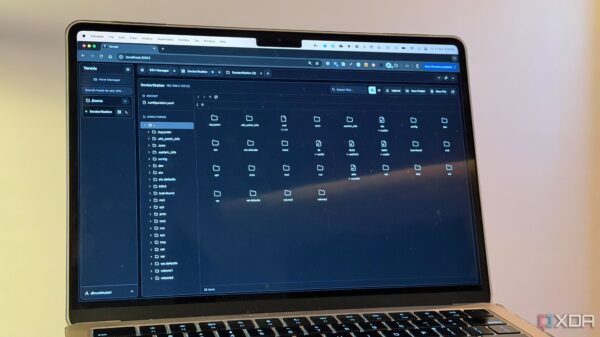Farmers in Georgia are increasingly turning to innovative irrigation technologies that promise to enhance efficiency and conserve water. This shift is particularly evident among those managing large agricultural operations, such as Wesley Webb, a fifth-generation farmer in Calhoun County. Speaking before the Georgia House of Representatives Special Committee on Resource Management Water Subcommittee, Webb emphasized the critical importance of water, stating, “Water is a number one resource to us.”
Webb, who oversees 4,000 acres equipped with 41 irrigation systems, highlights how advancements in irrigation technology have transformed farm management. Over his 35 years in agriculture, he has witnessed significant changes. “I’ve been putting my own money out for 30 years,” he noted, reflecting on the financial commitment involved in adopting new technologies.
At the recent Sunbelt Expo, Travis Miller, Regional Technical Products Sales Manager with Reinke, discussed the rapid evolution of irrigation technology. He noted that the last decade has seen a remarkable change, moving from traditional radio-controlled systems to modern, cell-based solutions. Previously, farmers relied on radios to control irrigation pivots, which had to be located within a certain range of a central computer.
“With more cell phone towers and the proliferation of smartphones, everything is now cell-based,” Miller explained. This shift allows farmers to monitor and manage their irrigation systems remotely, significantly reducing the time spent checking on machinery. “Some farmers own 40 to 50 machines and spend all day driving around,” he said. Now, they can access all necessary information directly from their phones.
Webb has embraced this technology, utilizing remote sensors that monitor soil conditions. These sensors provide data on soil temperature, rainfall, and irrigation needs, allowing farmers to make informed decisions. “Rather than going out every morning or every afternoon looking and saying, ‘It looks like it’s wilted,’ I can check my app,” he explained. This not only saves time and money but also conserves groundwater.
Miller, who is also a farmer, echoed Webb’s sentiments about the advantages of smartphone technology. He described a scenario in which he could monitor his irrigation systems while attending his daughter’s softball game. “It shows you all of your pivots,” he said, demonstrating how the app can identify which systems are active and which can be stopped. “It’s amazing how much time this is saving the customer.”
The technological advancements extend beyond mere monitoring. Miller noted that farmers can control their irrigation systems and track their usage history through these apps. This capability allows farm managers to assign specific access to employees, ensuring that each worker can only view and manage the systems for which they are responsible. “Each one has their own log-in, so I can tell who started the machine, who stopped it,” he added.
Calving Perry, a retired superintendent of UGA’s CM Stripling Irrigation Research Park, commented on the prevalence of irrigation systems in Georgia. “We do have well over 1,200 pivots here in this county, watering a lot of acres,” he stated. Perry emphasized the importance of efficiency in irrigation, noting that while water is relatively inexpensive for agriculture, the costs associated with moving and pumping it are significant.
He remarked that many farmers are increasingly adopting “smart irrigation” technologies. “Remote monitoring and control of irrigation systems via smartphones and apps is an advancement that definitely increased efficiency,” Perry said. According to him, most irrigators either have these technologies or are actively considering their implementation.
Looking towards the future, Miller anticipates further advancements in irrigation control. Soon, he expects farmers to have the ability to manage their wells remotely as well. “Through this program, I could turn my pump on from 30 miles away,” he said, highlighting the potential for expanded control over agricultural operations.
As farmers continue to embrace these innovations, the agricultural landscape in Georgia—and beyond—stands poised for a transformation that enhances productivity while conserving vital resources.







































































